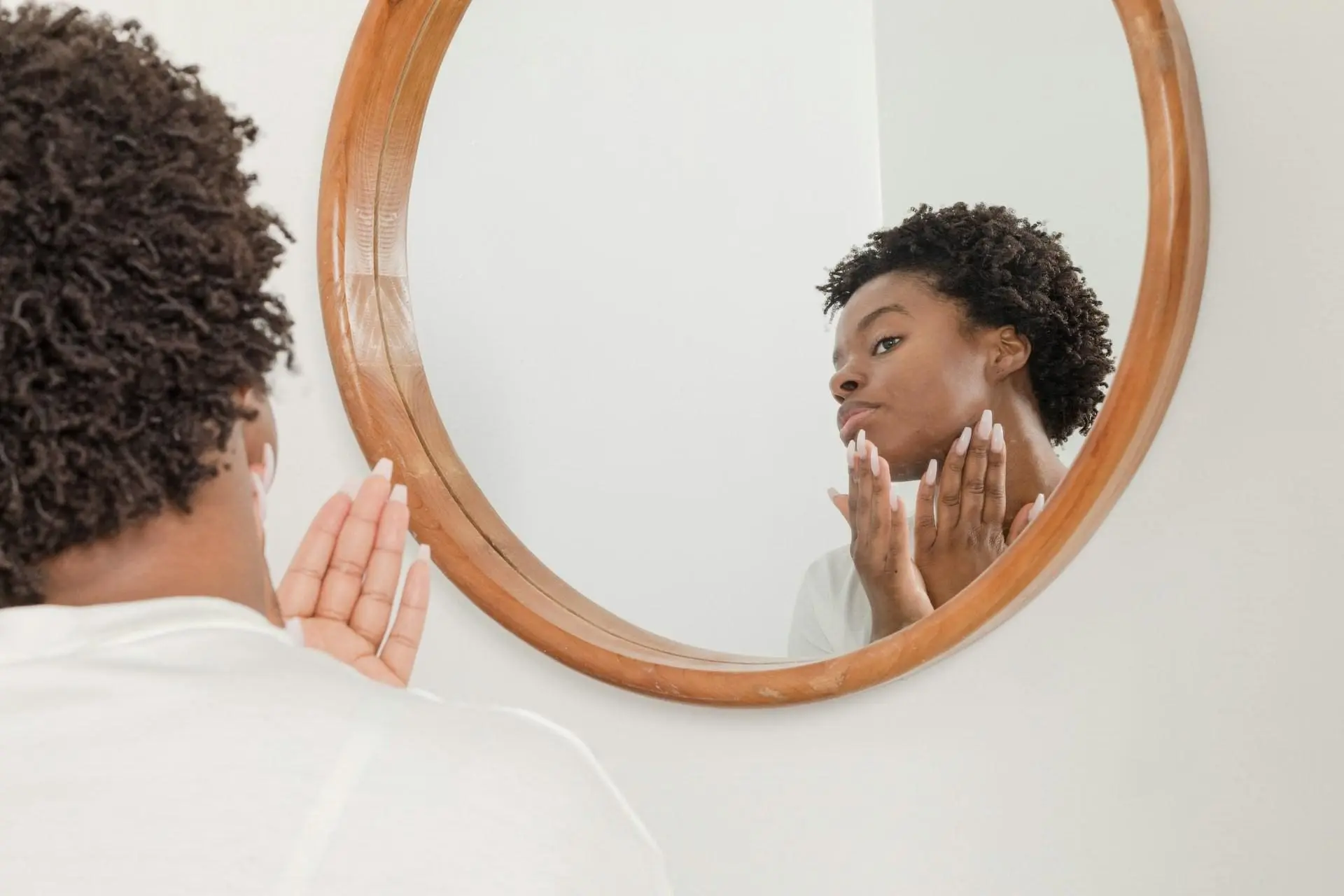
You wouldn’t skip your car’s regular check-up to keep it running smoothly, would you? The importance of regular skin check-ups is essential.
Your skin is like the body’s paint job, and it needs some love and attention, too. First things first, skin’s got a tough job. It’s the body’s first line of defense against all the elements – sun, wind, rain, you name it. Over time, it takes a little beating, and these battles can add up, leading to all sorts of skin issues that are easier to tackle when caught early.
Now, we get it – a blemish here or a spot there might not seem like a big deal. But think of your skin check-up as a VIP guest you have got to greet. Catching those tiny issues early allows you to nip potential problems in the bud.
Our skin, being the largest organ of the body, serves as a protective barrier against external threats such as infections, UV radiation, and environmental pollutants. Despite its importance, many people often overlook the significance of routine skin examinations.
Now that you know what’s at risk, let’s take a look at why visiting a dermatologist for a skin check-up regularly matters:
Early Detection of Skin Cancer
Skin cancer is one of the most common types of cancer globally, but it is also highly treatable when detected early. Regular skin check-ups enable the identification of unusual moles, lesions, or other abnormalities that could be indicative of skin cancer. Dermatologists are trained to recognize the early signs of melanoma, squamous cell carcinoma, and basal cell carcinoma, allowing for prompt intervention and better outcomes.
Sun Damage Assessment
Excessive exposure to the sun’s harmful UV rays is a major contributor to skin damage and aging. Regular skin check-ups allow for the assessment of sun damage, including the presence of sunspots, fine lines, and wrinkles. Dermatologists can provide guidance on sun protection measures and recommend skincare routines to mitigate the effects of sun exposure.
Monitoring Changes Over Time
Our skin undergoes various changes over time. Regular skin examinations provide an opportunity to monitor any alterations, such as changes in size, color, shape, or texture of moles or skin lesions. By keeping track of these changes, people and healthcare professionals can identify potential issues and take appropriate action, whether it be further monitoring, biopsy, or removal.
Identification of Allergies and Sensitivities
Skin is sensitive and can react to various substances, leading to allergic reactions or irritations. Regular skin check-ups can help identify potential allergens or irritants that may be causing skin issues. You can ask a dermatologist for recommendations on suitable skincare products and guidance on routines tailored to your skin type, reducing the risk of adverse reactions.
Prevention of Complications
Skin conditions, if left untreated, can lead to complications that affect not only the skin but also overall health. For instance, chronic skin conditions like eczema or psoriasis may worsen without proper management, impacting a person’s quality of life. Timely intervention through regular check-ups can help prevent complications and ensure effective management of skin disorders.
Psychological Well-Being
Skin conditions can have a significant impact on a person’s mental and emotional well-being. Conditions such as acne, psoriasis, or vitiligo may affect self-esteem and body image. Regular skin check-ups provide an opportunity for people to discuss their concerns with healthcare professionals, who can offer support, guidance, and appropriate treatments to improve both physical and mental health.
Tips for Conducting Skincare Self-Examinations
Establish a Routine: Set a regular schedule for self-examinations, aiming to conduct them at least once a month. Consistency is key in detecting any changes in your skin over time.
Choose a Well-Lit Space: Opt for a well-lit area with natural light if possible. Adequate lighting ensures that you can see your skin clearly and identify any irregularities.
Use a Full-Length Mirror: Stand in front of a full-length mirror to examine your entire body. This allows you to observe your skin from head to toe, including areas that may be easily overlooked.
Take Note of Moles and Freckles: Pay close attention to existing moles and freckles. Note their size, color, and shape. Changes in these characteristics could be possible warning signs.
Follow the ABCDE Rule: Familiarize yourself with the ABCDE rule for assessing moles:
- Asymmetry: If one half of the mole is different in shape from the other.
- Border irregularity: Ragged, notched, or blurred edges may be cause for concern.
- Color changes: Noticeable color changes or uneven coloring within the mole.
- Diameter: Any significant increase in size.
- Evolving: Keep an eye on moles that change over time.
Check the Scalp: Use a comb or your fingers to part your hair and inspect your scalp. Enlist the help of a friend or family member if needed, as they may be able to spot areas you can’t see easily.
Examine the Face, Neck, and Ears: Look closely at your face, neck, and ears. These areas are often exposed to the sun and may be prone to sun damage. Don’t forget to check behind your ears and on your earlobes.
Inspect the Hands and Nails: Examine the tops and palms of your hands, including the spaces between your fingers. Check your fingernails, as skin cancer can also develop beneath the nails.
Evaluate the Torso: Carefully inspect your chest, abdomen, and sides. Use a handheld mirror to view hard-to-see areas or ask someone for assistance.
Examine the Back: Use a second mirror or ask someone to help you check your back, including the back of your neck and shoulders. These areas are often neglected but are still susceptible to skin concerns.
Assess the Lower Body: Pay attention to your hips, buttocks, and genital area. Skin cancer can occur in areas not frequently exposed to sunlight, so a thorough examination is essential.
Inspect the Legs: Examine your legs, including the backs of your knees and the spaces between your toes. Skin cancer can develop anywhere in the body, so be thorough with your assessment.
Monitor Changes Over Time: Take note of any changes you observe during your self-examination. Keep a record of the shape, color, and size of moles, as well as any other skin irregularities. This documentation can be valuable when consulting with a dermatologist.
Seek Professional Guidance: While self-examinations are an essential part of skincare, they should not replace regular check-ups with a dermatologist. Schedule periodic visits to a skincare professional for a more thorough examination and guidance on maintaining skin health.
Use Sun Protection: Prevention is key to skin health. Use an SPF 30 sunscreen to protect your skin from the sun’s harmful UV, stay under shade during the peak hours (from 12:00 PM to 03:00 PM), and wear protective clothing.
Incorporating these practical tips into your routine will enhance the effectiveness of your skincare self-examinations. Remember, early detection will allow you to address potential skin issues, so stay vigilant and prioritize your skin health. If you notice any concerning changes, talk with a dermatologist promptly for further evaluation and a treatment plan.
Your skin deserves the best care, and we are here to provide it! As a dedicated team of skincare experts, Suncoast Skin Solutions understands the importance of a healthy, glowing complexion. It’s not just about looking good; it’s about feeling fantastic in your skin! Call 1-844-SUNDERM for a consultation.
SunCoast Skin Solutions Dermatology offices are located in Tampa / Hillsborough, St. Pete / Pinellas County, Brandon, Lutz, Winter Haven, Largo, Hudson, Leesburg, Jupiter, Lecanto, Riverview, Brooksville, Clearwater, Ocala, Palm Harbor, Daytona Beach, Sarasota, Punta Gorda, Seminole, Jacksonville, (Inverness, Port Charlette, Port Saint Lucie coming soon), Florida. Contact us at 1-844-786-3376 or click here.

Recent Comments